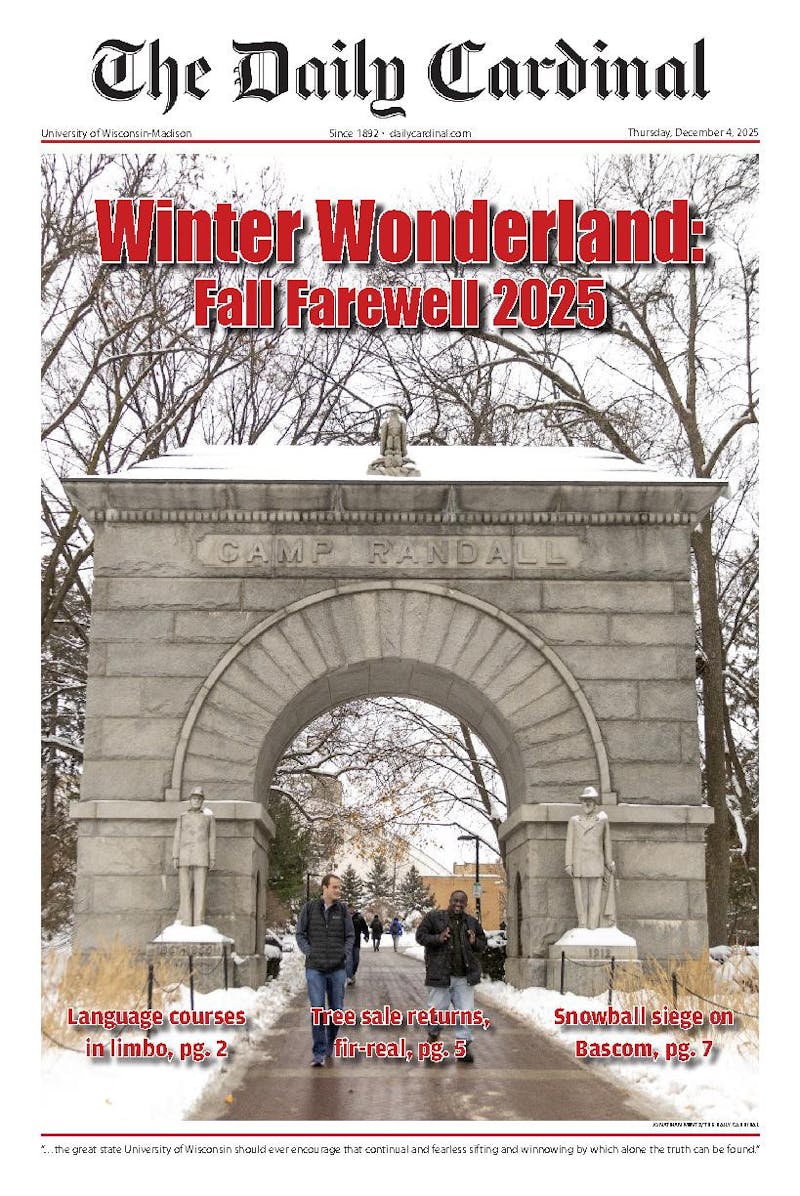Karl Malcolm isn't scared of black bears, and he's hoping to help others overcome their fears as well.
For as long as he can remember, Malcolm has been an avid hunter and fisherman. Now a graduate student at UW-Madison, he puts his knowledge of the woods to good use by studying black bear dispersal patterns and how they associate with people around the world.
""From our work we'll have a better idea of where to expect bears in the future and what habitats they will move through as they continue to expand southward in Wisconsin,"" Malcolm said.
With black bear populations expanding, Malcolm says there has also been an increase in encounters between bears and humans in Wisconsin.
""Bears have been showing up in places where people haven't expected them, like near homes and communities farther south in our state,"" Malcolm said. ""People want to know where they are coming from and what the future will hold in terms of bears farther south.
To answer these questions, Malcolm and Professor Tim Van Deelen have been putting GPS tracking collars on one-year-old cubs in Wisconsin.
The black bear is North America's most common species of bear, with a population estimated to be almost twice that of all other bears combined. Black bears are omnivorous and typically find their food in the forests where they live.
However, they are known to wander outside the forest and into open areas in search of food, particularly at night.
Black bear cubs are born in mid-winter. During that time they are completely dependent on their drowsy, semi-hibernating mothers for warmth and nutrition. The cubs stay with their mothers until the next winter, and then move away from their birthplace in an event called dispersal.
Each winter, Malcolm tracks down adult females and their newborn cubs in dens, only to return the following year to conduct a health survey and put the collars on the one-year-olds before they disperse. The collars do not hurt the bears, but they allow the researchers to track their every move using GPS signals from satellites.
The yearly data collection will give Malcolm a better idea of what types of habitats bears move through when first establishing their territory, such as forests, fields and river corridors. It will also help the research team to better understand how habitat availability and environmental cues shape dispersal.
""By tracking these bears we hope to help anticipate the future expansion of bear populations so we can educate people in affected areas about how to live with bears."" Malcolm said.
After following the UW-Madison project, which is in its sixth year, wildlife biologists from Malcolm's home state, Michigan, have turned to Malcolm and his colleagues for help with their expanding bear population.
However, Wisconsin and Michigan aren't the only places where Malcolm is trying to learn more about bears. A country on the other side of the world has a whole different set of issues related to bears.
In a three-year project based in Southwestern China, Malcolm is studying Asiatic black bears, more commonly called ""moon bears.""
""China kind of has the opposite situation from here,"" Malcolm said. ""In China, bear populations have contracted rather than expanded and now bears exist in small, isolated patches of habitat. Rather than bears moving into more developed areas, like we have happening here in Wisconsin, bears in China face threats from people moving into their remaining patches of habitat where poaching is a big concern.""
Although collars were not used in the project in China, other physical evidence helped the researcher, bear scat and hair.
By analyzing hormone levels in hair and feces, Malcolm hopes to determine which bears in China are the most stressed. One potential cause of increased stress levels is disturbance in and around nature reserves.
Despite living mostly on forested mountaintops, moon bears come down to eat corn and goats that are now being raised nearby. In an effort to protect crops and livestock, farmers sometimes respond by trapping and poisoning bears.
In these areas there is also a monetary incentive to kill bears, as their gallbladders are prized possessions. Selling just one gallbladder can pay as much as a year's salary for a local farmer.
By studying the stress levels of bears in different habitats, Malcolm hopes to get a better idea of their landscape requirements. It could also help inform the research team of how nature reserves can be managed to benefit bear conservation in the best possible way.
Malcolm currently has around 500 samples of hair and feces that he will take to a lab in Virginia to be analyzed next month.
""From our initial round of analysis, we are finding evidence of spatial differences in stress levels that could be related to human disturbance,"" Malcolm said. ""We hope our data might give us a unique way of quantifying the quality of habitat moon bears need to thrive.""
Karl Malcolm is a graduate student at the UW in the college of Agriculture and Life Sciences. For more information about black bears visit www.news.cals.wisc.edu.






